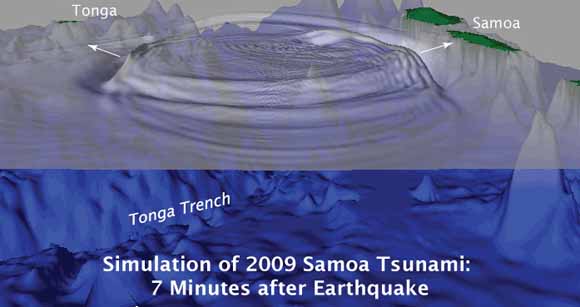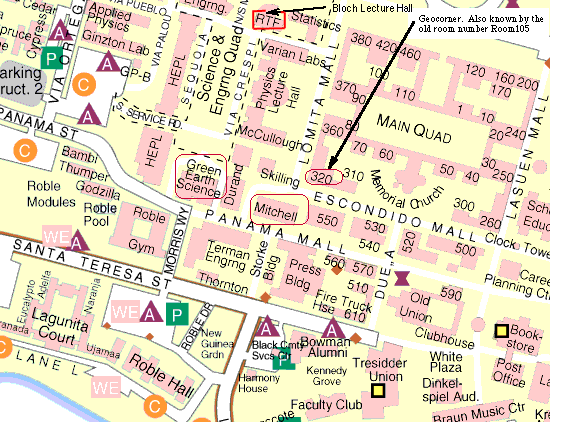
Location: Stanford University
This will be the 412th meeting since 1954

Tsunamis are generated by earthquakes, landslides, and other catastrophic geologic phenomena through vertical displacement of the ocean over a significant area. For earthquakes (the most common tsunami trigger), displacement of the seafloor occurs in response to slip along a fault and the accompanying elastic deformation of the surrounding rocks. In the aftermath of the devastating 2004 Indian Ocean tsunami, a global network of ocean bottom-pressure records ("tsunami buoys") have been deployed to provide precise time-series data of tsunami waves in the deep ocean for forecasting purposes. For case studies, these data are also ideal in verifying whether our understanding of the tsunami generation process is correct. In this regard, the recent M=8.1 Samoa earthquake that occurred on September 29, 2009 presents an anomaly. Unlike typical tsunamigenic earthquakes that occur on the inter-plate thrust of subduction zones, the 2009 Samoa earthquake was an outer-rise event characterized by predominant normal faulting. Results from simple tsunami generation models that involve slip on a single fault do not match the direct arrivals on regional bottom-pressure records. Rupture complexity is indicated by sea floor physiography near the epicenter, a significant non-double couple component of the seismic moment tensor, and large along-strike variations in slip and rake. Determination of a tsunami generation model that is consistent with geologic, seismologic, and tsunami observations has proven to be a formidable task.
Related URL: http://walrus.wr.usgs.gov/tsunami/samoa09/

Eric Geist
Eric Geist is a geophysicist with Western Coastal & Marine Geology at the U.S. Geological Survey. His current research includes Tsunami probability, generation, and earthquake mechanics, Non-linear modeling of geologic processes, and Chaos & complexity in coastal and marine geology. See http://walrus.wr.usgs.gov/staff/egeist/ for a list of selected publications. Eric received his B.S. degree in Geophysics from the Colorado School of Mines and his MS degree in Geophysics from Stanford University.
Reservations: The preferred way to make reservations is simply to email John Spritzer at jspritzer@usgs.gov by Feb. 5, tell him you will attend, commit to pay, and bring your payment to the meeting. John always emails a confirmation; if you don’t get one, assume email crashed yet again and email him a second time. A check made to “PGS” is preferred, payable at the meeting.
If you want to pay in advance:
Everyone (including Stanford folks now) Please make dinner reservations by Feb. 5. Contact John Spritzer, at U.S. Geological Survey, 345 Middlefield Road, MS-973 Menlo Park, CA 94025, Tel.: (650) 329-4833. Send check made out to “PGS” to John.
Dinner is $35.00. Includes wine (5:30 to 6:15 PM.) and dinner (6:15-7:30 PM.).
For students from all universities and colleges, the dinner, including the social 3/4-hour, is $8.00 and is partially subsidized thanks to the School of Earth Sciences, Stanford University (Note, no-show reservations owe the full price).
Doris, whose wonderful crew prepares our meals, asked that we let you know that people who are late RSVPing and people who show up without a reservation will be welcome but that they will be eating on paper plates with plastic utensils (food supply permitting).
Dues for Academic Year 2009-2010 ($10.00) should be sent to John Spritzer, U.S. Geological Survey, 345 Middlefield Road, MS-973 _Menlo Park, CA 94025. John’s phone: (650) 329-4833.
Officers: Vicki Langenheim, President; Jon Hagstrum, Vice President; Mike Diggles, Secretary; John Spritzer, Treasurer; Elizabeth Miller, PGS Stanford University Coordinator

Date created: January 12, 2010
Last modified: February 22, 2010
Created by: Mike Diggles, Webmaster-Secretary, PGS.